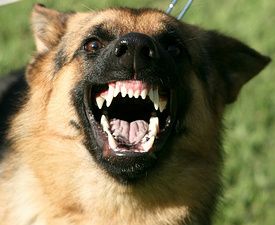As an animal professional I tend to be different from the norm and since I’ve been in my field a long time, don’t see things the same way as the average pet owner does. Plus, I take the things I know for granted.
So, when I attended a party that integrated a large number of dogs and humans together I was appalled when two dogs got into a minor squabble and the owner intervened and reprimanded the wrong dog.
In fact, I would have simply used some sort of interrupter to stop the incident or let the animals sort it out.
Favoritism and discipling the wrong dog isn’t a rare occurrence–it happens a lot.
The problem with it is that it also can escalate problems.
You see animals have a social structure within the home. Both dogs and cats sort out who is the top cat or dog but humans tend to mess it up because of an idea versus reality.
The idea is that everyone should be treated equally or fairly.
This is not reality in the animal world.
At the party, the dog that got in trouble was not the favorite of the owner.
The favorite dog is a beautiful animal, stunning really, but she is over indulged and pampered.
This means that she is allowed to break the rules the other animals have to follow and is not ever scolded for bad behavior.
She tends to irritate the other dogs who give her clear warning signals to back off. The warning gaze turns to growls which then are accompanied by a slight showing of teeth and then a lunge.
Instead of backing off, the favored dog continues. This means that the dog that is working to set limits and back her off is often reprimanded for his or her bad behavior by the pet owner who should be a bit more clued up than she is.
Now, at the party this became a problem because the dog with poor social manners is not adhering to good dog manners.
Instead of backing off when first “asked” by dogs she is bugging, the strange animals are having to get overt in their attempts to get this dog to stop behaving badly.
But seriously, it is the owner that is behaving badly. She is being irresponsible and creating a problem where there shouldn’t be one.
Animals are very subtle in their communication with each other. Body tension and slight positioning telegraph a lot to the other creatures in their sphere.
Human intervention, while sometimes needed, is often not appropriate because the human thought process is often disconnected from the reality of the situation.
An older dog will mold and discipline a new puppy. But if the owner reprimands the older, established animal–well, it makes for some issues down the road.
Also, it might suppress the behavior for the moment, but the intensity that will be displayed later is likely to be highly escalated.
The animal world is not into equality, it is not into fairness, this means that the social order is sorted out by animals and isn’t usually what people “think” it should be.
In fact, what pet owners think things should be might actually be be making the whole thing worse and preventing a peaceable kingdom.
So, the next time you have the inclination to interfere–stop and use some restraint– because you just might be making a mistake that could turn ugly.
Okay, so fess up–do you make this type of mistake? Maybe you don’t, but please share what you know or have learned either way!
Chime in via the comments or over in my Facebook community.
Photo Credit: Tambako



